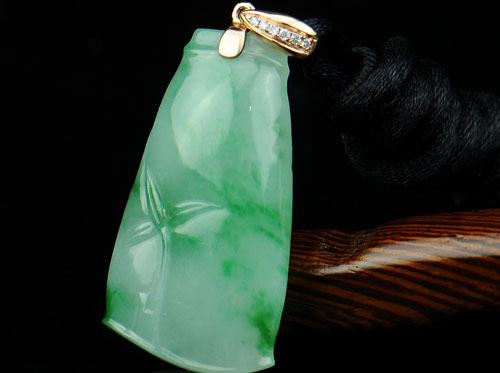From a historical point of view, the type and evolution of the ornamentation reflects the characteristics of the ancient jade. In different historical periods, the ornamentation often has great differences in composition, shape and the theme of the expression. In summary, the jade ornaments of the ancient jade are mainly the following: dragon, crepe, crepe, grain, cloud, grain, rib, ring, thin, heavy, vortex, etc.

èŸ èž pattern: èŸ refers to "curving and volts." The crepe on the ancient bronzes has a body and legs like dragons, and the face resembles a beast. This pattern starts from Shang and Zhou and is the main ornament on the jade wares of the Spring and Autumn Warring States and the Han Dynasty.
Moire: There are many forms of moiré on jade. There is a single cloud, consisting of two parts: the cloud head and the cloud tail; there are double clouds, and the cloud head is partially bifurcated. There are three clouds, and the cloud head is divided into three small cirrus clouds; there are also Ganoderma lucidum clouds.
Grain pattern: Its pattern is a row of densely-shaped small nails, which are in a spiral shape. The legend is the image of the valley tooth, so it is called the grain pattern. It is mainly popular in the Warring States Period and the Qin and Han Dynasties, and can also be seen in the antique jade articles of the Qing Dynasty.
饕餮 pattern: 饕餮 is a gluttony beast in the legend. The crepe pattern is a patterned monster face, so it is also called "beast face". It can be seen from the late Neolithic period to the jade articles of the Shang and Zhou Dynasties.
Cloud-ray pattern: a continuous pattern is formed by continuous spiral-shaped lines. Circular continuous composition, called moiré; square continuous composition, called thunder. This pattern is popular in the bronzes and jade articles of the Shang and Zhou Dynasties.
Nail studs: One of the simplest patterns on jade, commonly found in the jade of the Warring States Period of the Qin and Han Dynasties. The ribs are raised papillary rounds that are arranged or longitudinally or horizontally.
èž èž èž èž èž èž èž èž èž èž èž èž èž èž èž èž èž èž èž èž èž èž èž èž èž èž èž èž èž èž èž èž èž èž èž èž èž èž èž èž èž èž èž èž èž èž èž èž èž èž èžThin body, fat buttocks, still seeing in the Ming and Qing Dynasties.
Animal face: The animal face on the jade has dragons, cows, sheep, etc. There are also unknown animals, and the ornamentation is composed of straight lines and broken lines drawn by the stencil or extrusion method.
Bird pattern: Generally, the feathers are mostly indented and slender lines. The bird's tail has a peacock tail or a grassy type. The eye has a courtier shape, a triangular eye and a single eye.
Dragon pattern: Dragon pattern is one of the main patterns of jade articles of the past, and it was first seen in Hongshan culture. Usually the snake body, or the body, or decorated with scales, some have feet, some have no feet.
Party Dress Shoes,Wedding Dress Shoes,Bit Loafers Men'S
Desay Group CO.,Ltd , https://www.desaygroup.com